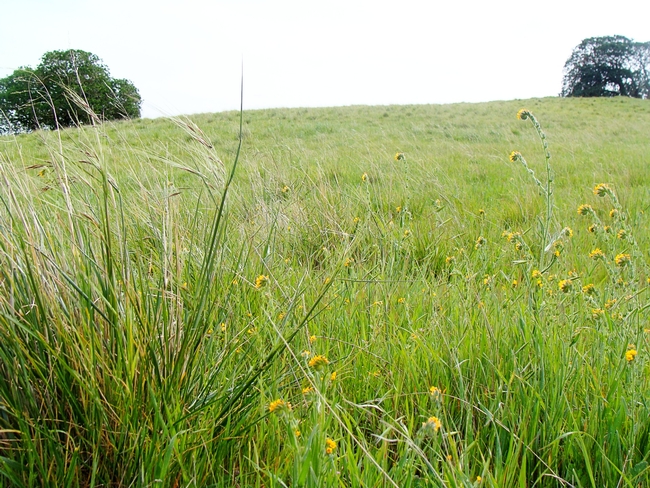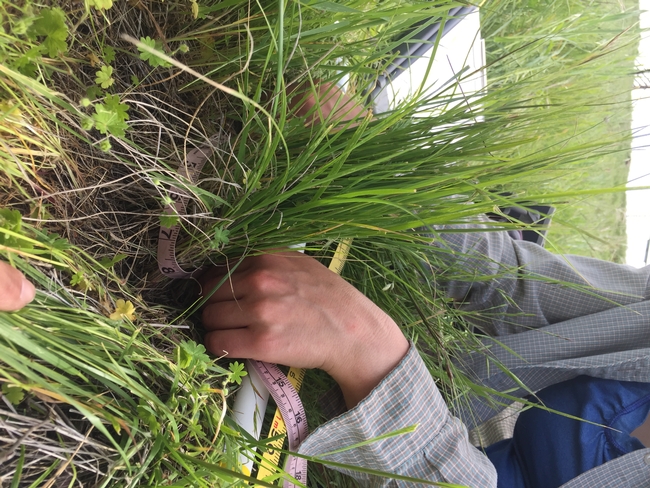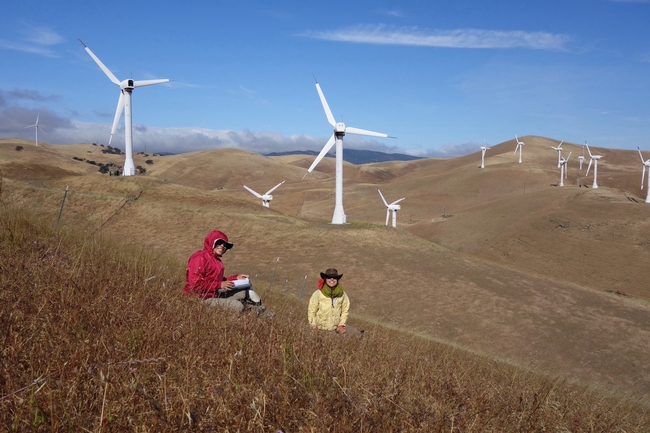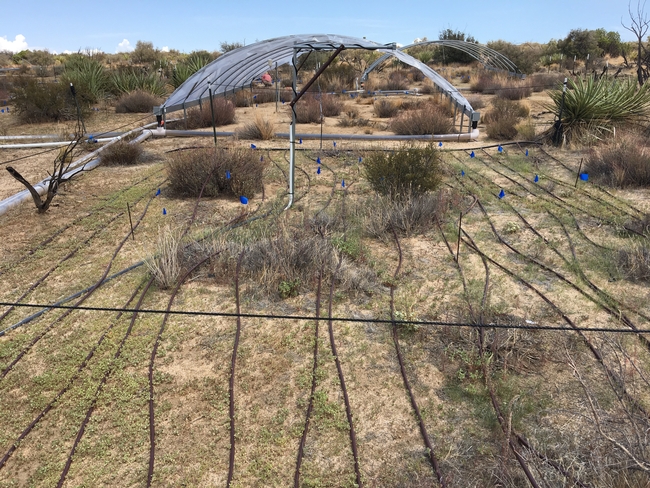Posts Tagged: UC Riverside
Not All Bees Are Vegetarians: Some Eat Meat
For years we've been taught that wasps are carnivores while bees (which evolved from wasps), are vegetarians. Don't bees forage only for pollen and...
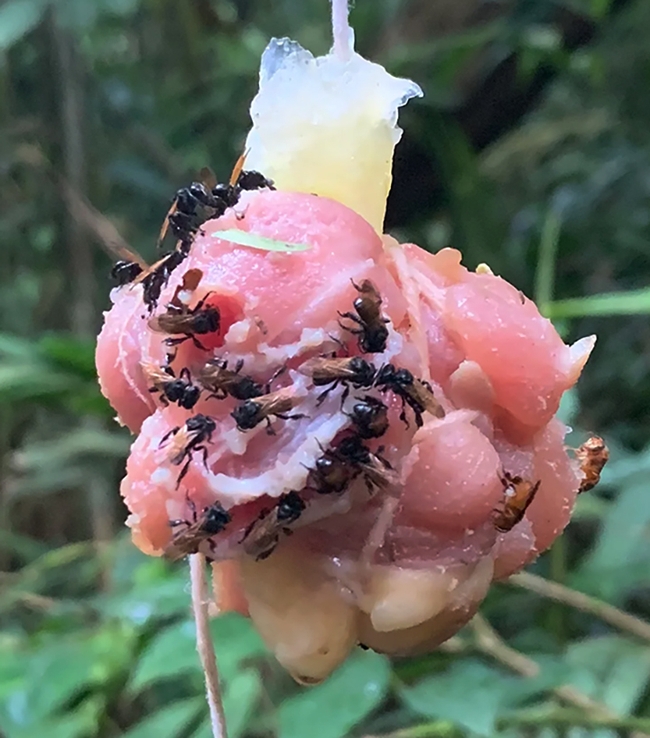
Stingless bees in Costa Rica dining on chicken bait. (Photo by Quinn McFrederick of UC Riverside)
The no-tech way to preserve California’s state grass
Disappearing native is like an environmental Swiss Army knife
Though it is disappearing, California's official state grass has the ability to live for 100 years or more. New research demonstrates that sheep and cattle can help it achieve that longevity.
Purple needlegrass once dominated the state's grasslands, serving as food for Native Americans and for more than 330 terrestrial creatures. Today, California has lost most of its grasslands, and the needlegrass occupies only one tenth of what remains.
It is drought resistant, promotes the health of native wildflowers by attracting beneficial root fungi, burns more slowly than non-native grasses and speeds the postfire recovery of burned lands. For these and other reasons, many who work toward habitat restoration hope to preserve the needlegrass.
“Where it grows, these tall, slender bunches become focal points, beautiful as well as environmentally beneficial,” said Loralee Larios, a UC Riverside plant ecologist affiliated with UC Agriculture and Natural Resources. “However, identifying successful management strategies for a species that can live for a couple hundred years is challenging.”
To meet that challenge, Larios teamed up with University of Oregon plant ecologist Lauren Hallett and Northern California's East Bay Regional Park District. They tracked the health of nearly 5,000 individual needlegrass clumps over six years, including an El Niño rain year as well as historic drought.
The researchers took measurements of plant health including growth and seed production. They placed small bags over many of the grass clumps to capture the seeds and quantify the number of seeds they produced.
Their findings, now published in the Journal of Applied Ecology, were that purple needlegrass did better in places where sheep were allowed to graze. The positive effects of the grazing were amplified in times of wetter weather.
Previously, the park district spent a decade trying to assess the success of its grassland maintenance techniques. However, the district's method of applying a strategy like grazing, and then measuring the percentage of needlegrass clumps in a given area resulted in data that didn't follow a discernable pattern from year to year.
“By tracking each plant over time, rather than scanning broadly across an area, we gained much more clarity about how the grass responds to the grazing,” Larios explained. “Perhaps counterintuitively, we saw that the needlegrass generally died back when sheep weren't allowed to graze on it.”
When sheep were removed from the study sites, the needlegrass in all but two of the sites became less healthy. The researchers would like to learn whether the two sites that remained healthy have needlegrasses that are genetically distinct.
Grazing is a controversial strategy for grassland restoration. Some conservationists believe sheep eating the target grass, particularly during already stressful drought years, does not enhance their survival. As far back as the 1800s, some researchers hypothesized that the combination of grazing and drought resulted in the loss of perennial grasses.
Though drought was not beneficial for any of the plants in this study, the researchers believe grazing helped needlegrass survive in at least two ways. One, by trampling on leaf litter and other organic debris, sheep created space for new needlegrass to grow.
“Sometimes you get litter that's as deep as a pencil — so much dead, non-native grass piles up. It's hard for a little seed to get enough light through all of that,” Larios said.
Secondly, sheep eat non-native grasses that generate growth-suppressing debris and compete with purple needlegrass for resources.
When the Spanish colonized California, they brought forage grasses like wild oats that they thought would benefit cattle. Those introduced grasses spread, and now dominate the state's grasslands.
“Our grasslands are known as one of the world's biggest biological invasions,” Larios said.
California has as many as 25 million acres of grasslands, equivalent to the combined areas of Massachusetts, Connecticut, and Rhode Island. Though Larios does not believe it is possible to rid the state of all non-native grasses, she said it is possible to maintain or even increase the amount of purple needlegrass.
“It's great for carbon storage, which mitigates climate change, it doesn't serve as wildfire fuel, and cultivates a space for wildflowers that pollinators are then able to use,” Larios said. “We want to keep all those benefits.”
With dwindling water supplies, the timing of rainfall matters
How to help plants in drought-stricken states
A new UC Riverside study shows it's not how much extra water you give your plants, but when you give it that counts.
This is especially true near Palm Springs, where the research team created artificial rainfall to examine the effects on plants over the course of two years. This region has both winter and summer growing seasons, both of which are increasingly impacted by drought and, occasionally, extreme rain events.
Normally, some desert wildflowers and grasses begin growing in December, and are dead by June. A second community of plants sprouts in July and flowers in August. These include the wildflowers that make for an extremely popular tourist attraction in “super bloom” years.
“We wanted to understand whether one season is more sensitive to climate change than another,” said Marko Spasojevic, UCR plant ecologist and lead study author. “If we see an increase or decrease in summer rains, or winter rains, how does that affect the ecosystem?”
The team observed that in summer, plants grow more when given extra water, in addition to any natural rainfall. However, the same was not true in winter.
“Essentially, adding water in summer gets us more bang for our buck,” Spasojevic said.
Their findings are described in a paper published in the University of California journal Elementa.
Over the course of the study, the team observed 24 plots of land at the Boyd Deep Canyon Desert Research Center, in the Palm Desert area. Some of the plots got whatever rain naturally fell. Others were covered and allowed to receive rain only in one season. A third group of plots received additional collected rainwater.
While adding water in summer resulted in higher plant biomass, it generally did not increase the diversity of plants that grew, the researchers noted. Decreasing rainfall, in contrast, had negative effects on plants across both summer and winter, but may lead to some increased growth in the following off-seasons.
Implications of the work extend beyond learning when additional water resources might be applied simply to help plants grow. Whole communities of animals depend on these plants. They are critical for pollinators such as bees and butterflies, and they play a big role in controlling erosion and movement of soils by wind.
“Studies like this one are critical for understanding the complex effects of climate change to dryland ecosystems,” said Darrel Jenerette, UCR landscape ecologist and study co-author.
Desert plants also play an important role in removing carbon dioxide and nitrogen from the atmosphere to use as fuel for growth. Microbes that live in the soil can use the carbon and nitrogen released by plant roots, then send it back into the atmosphere where it can affect the climate.
“Drylands cover roughly a third of the land surface, so even small changes in the way they take in and emit carbon or nitrogen could have a big impact on our atmosphere,” said Peter Homyak, UCR environmental scientist and study co-author.
As the team continues this research over the next few years, they expect to see changes in soil carbon and nitrogen cycling, given that plants are already being affected by changes in seasonal rainfall, as this study shows.
“Can changes in precipitation patterns alter the feedback between plants and microbes, destabilizing the carbon locked in soils and sending more of it into the atmosphere? We are working on figuring that out,” Homyak said.
Editor's note: Jenerette and Homyak are affiliated with University of California Agriculture and Natural Resources through UC Riverside's Agricultural Experiment Station.
UC Davis Entomologists Honored in PBESA Award Competitions
Breaking news: UC Davis entomologists won three of the 12 student and professional awards given by the Pacific Branch, Entomological Society of...
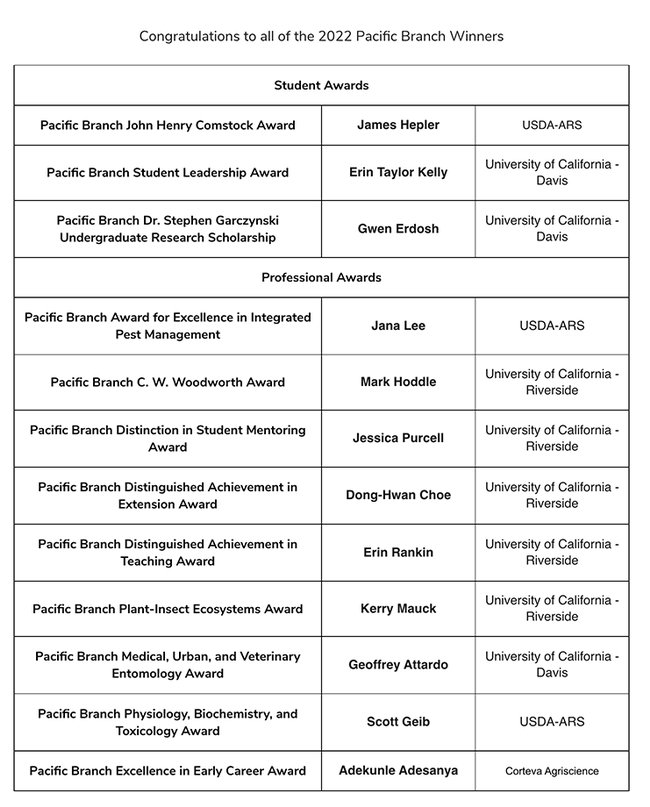
pbesawinners3.13.16 PM
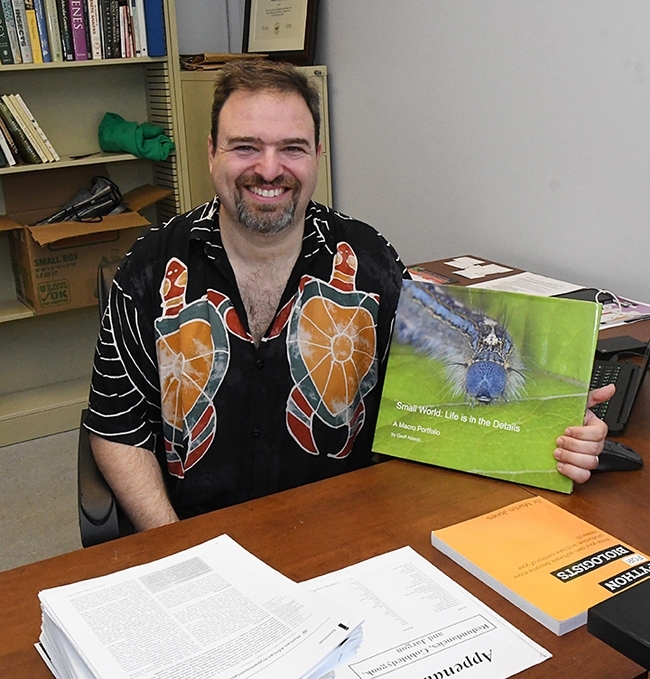
UC Davis medical entomologist-geneticist Geoffrey Attardo is the recipient of Medical, Urban, and Veterinary Entomology Award from the Pacific Branch, Entomological of America. (Photo by Kathy Keatley Garvey)
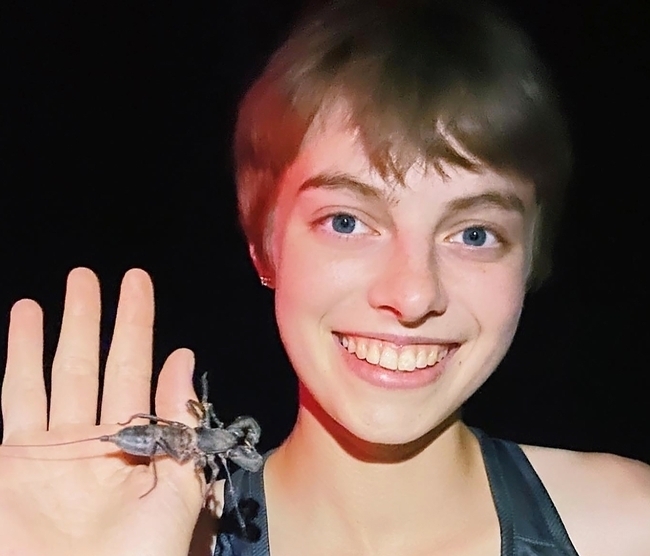
UC Davis undergraduate entomology major Gwen Erdosh of the Louie Yang lab and a member of the Research Scholars Program in Insect Biology, won the inaugural Dr. Stephen Garczynski Undergraduate Research Scholarship.
Simon 'Niels' Groen: How Predators Can Feed on That Highly Toxic Milkweed
"Scientists now understand how certain animals can feed on picturesque, orange monarch butterflies, which are filled from head to abdomen with...
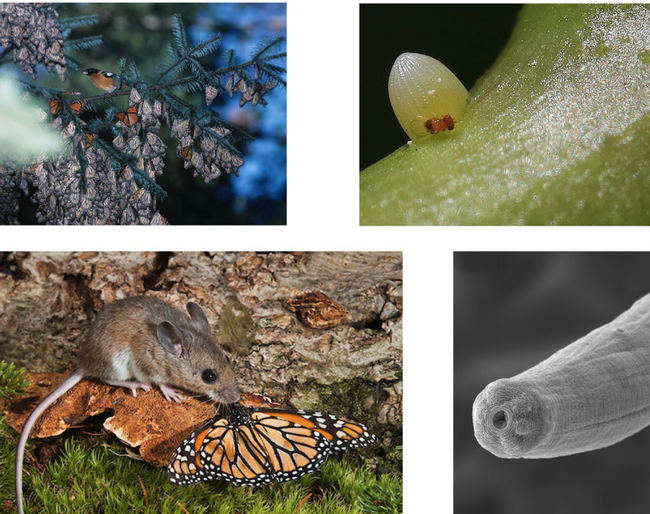
These are some of the illustrations that Niels Groen will use at his UC Davis seminar.


